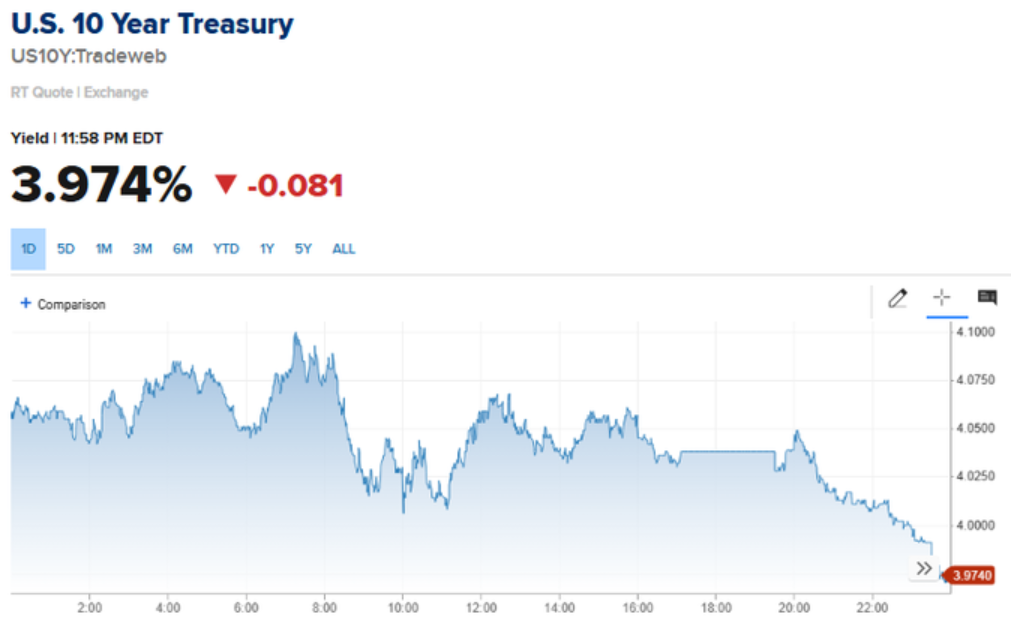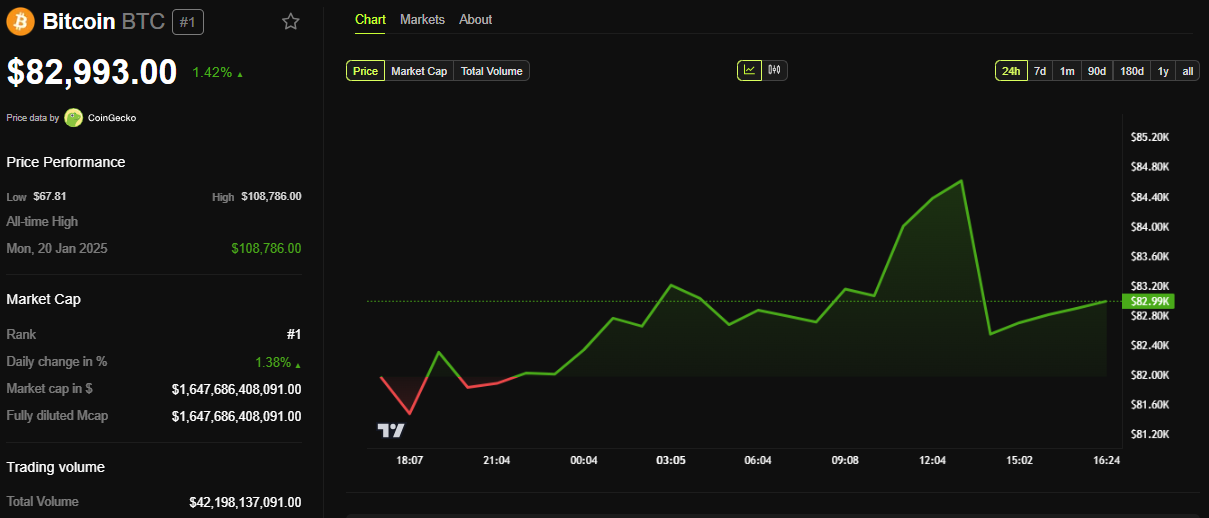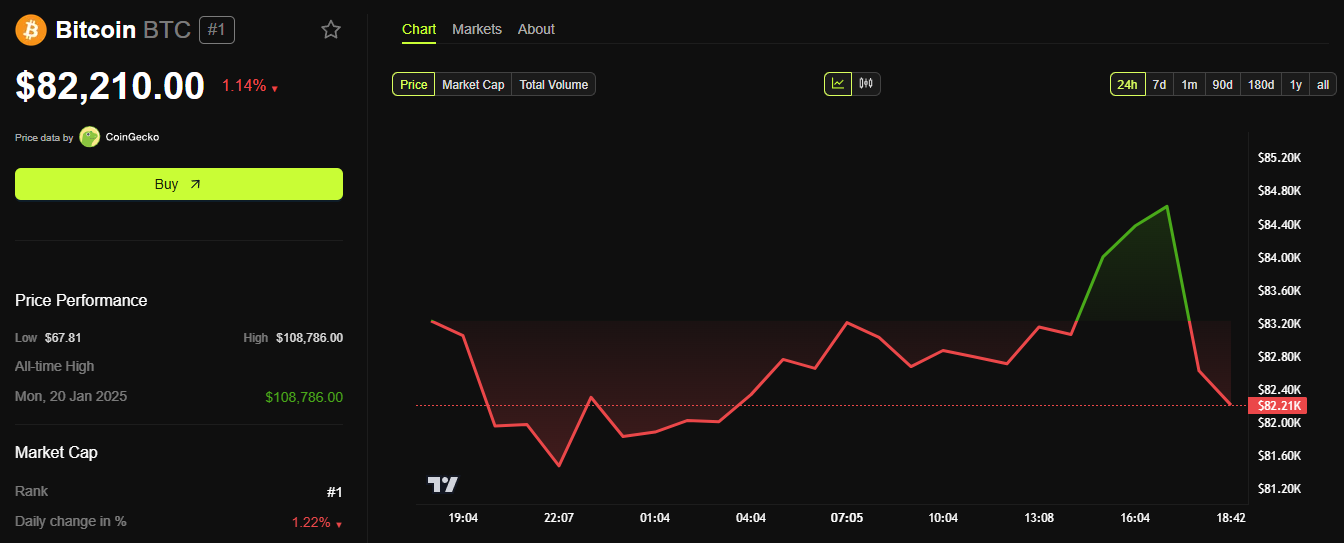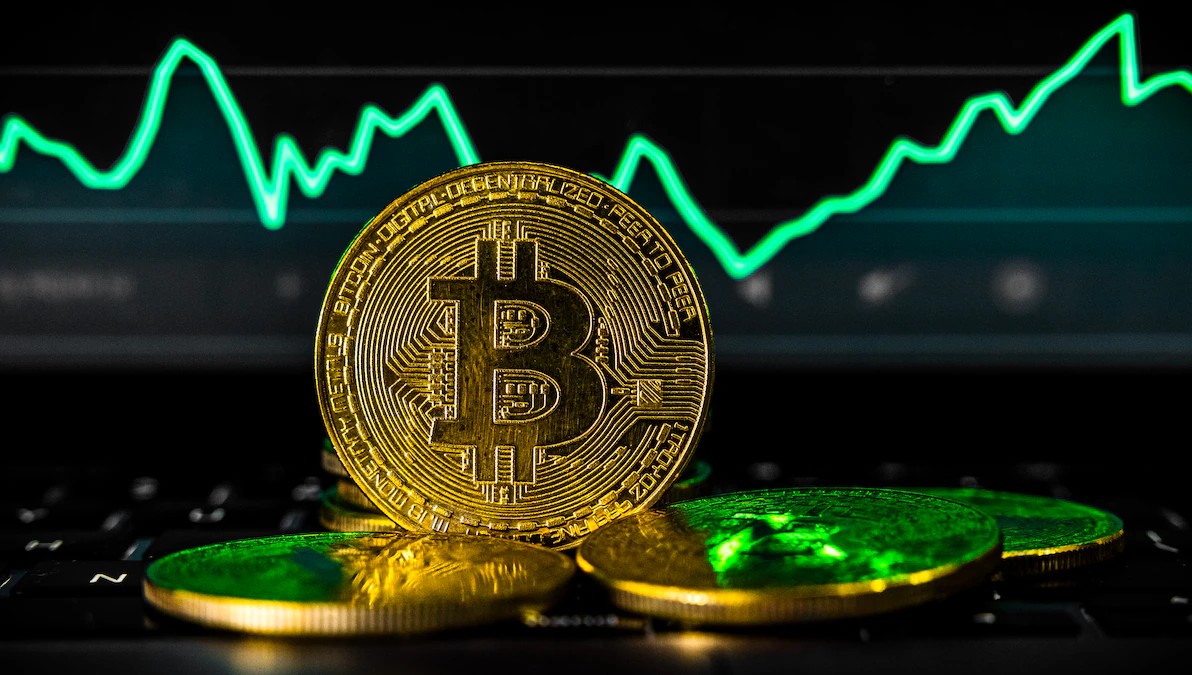Bitcoin
Bitcoin.org Celebrates 16 Years: What to Know

Bitcoin.org, the website that introduced the world to decentralized digital currency, turns 16 years old today. Launched on August 18, 2008, by Bitcoin’s enigmatic creator, Satoshi Nakamoto, and early contributor Martti Malmi, the site remains a key resource for anyone seeking to learn about Bitcoin’s origins and evolution.
Here’s a closer look at Bitcoin.org’s legacy, its role in the community, and some of the controversies surrounding it.
The Birthplace of a Financial Revolution
Bitcoin.org’s creation marked the beginning of a movement that would redefine money. Registered anonymously on August 18, 2008, the website became the first public space where the concept of Bitcoin was shared.
In its early days, the site hosted the Bitcoin software and a brief overview of how peer-to-peer electronic cash could function without a central authority — a radical idea at the time. As the official introduction of Bitcoin to the world, Bitcoin.org set the tone for the decentralized finance movement, encouraging early adoption and the growth of the network.
Read more: What Is Bitcoin? A Guide to the Original Cryptocurrency

The Iconic Bitcoin Whitepaper
One of the most important resources hosted on Bitcoin.org is the Bitcoin whitepaper, titled “Bitcoin: A Peer-to-Peer Electronic Cash System.” Published on October 31, 2008, outlines the foundational concept behind the Bitcoin network. Titled Bitcoin: A Peer-to-Peer Electronic Cash System, the document is surprisingly concise at just nine pages long.
In it, Nakamoto details a decentralized digital currency designed to facilitate low-cost transactions without relying on financial institutions or intermediaries. Instead of using a centralized server, Bitcoin operates through a peer-to-peer (P2P) network of connected nodes.
The paper also explains how the “Proof-of-Work” mechanism makes it nearly impossible to falsify transaction data. For those who are interested, the original document can be read at https://bitcoin.org/bitcoin.pdf
Independence and Community Control
In 2011, Satoshi Nakamoto handed over control of Bitcoin.org to trusted members of the Bitcoin community, a decision that ensured the site would remain independent from corporate or government influence. Today, the site is managed by volunteers, reflecting Bitcoin’s decentralized ethos. One of the site’s administrators goes by the online alias Cøbra.
This transfer of control to anonymous community members preserved the platform’s neutrality and has allowed Bitcoin.org to avoid becoming a marketing tool for specific companies or agendas, unlike many other crypto projects.
Read more: Satoshi Nakamoto – Who is the Founder of Bitcoin?
Internal Conflicts and Divisive Debates
Bitcoin.org has been at the center of some of Bitcoin’s most heated disputes. One of the biggest controversies revolved around the block size debate, which led to the infamous Bitcoin scaling wars of 2017.
The conflict split the community into factions, with some arguing for larger blocks to speed up transactions, while others, including the administrators of Bitcoin.org, remained committed to keeping Bitcoin’s original structure intact.
The debate eventually resulted in a hard fork when supporters of larger blocks split the Bitcoin blockchain on August 1, 2017. This fork created Bitcoin Cash, a new cryptocurrency whose backers believe it aligns more closely with Satoshi Nakamoto’s original vision.
Ownership Disputes and Security Breaches
Despite being a crucial resource, Bitcoin.org hasn’t been immune to ownership conflicts and security issues. In 2021, the site was hijacked in a high-profile scam that directed visitors to a fraudulent giveaway.
This incident raised questions about the website’s security and the risks of decentralized management.
Additionally, the site’s long-standing administrator Cøbra has been a divisive figure, often embroiled in disputes with other prominent Bitcoin developers. His anonymity and controversial statements have sparked debates about whether he should still control the domain, illustrating the challenges of trust in decentralized systems.
Read more: Who Owns the Most Bitcoin in 2024?

Ongoing Legal Battles
Bitcoin.org has also faced legal challenges. In 2021, self-proclaimed Bitcoin inventor Craig Wright sued the website for hosting the Bitcoin whitepaper, which he claims to have authored as Satoshi Nakamoto. Wright, an Australian computer scientist, has long been a controversial figure in the crypto community due to his insistence that he is the creator of Bitcoin — a claim widely disputed and rejected by most experts and Bitcoin enthusiasts.
A UK court recently ruled that Craig Wright is not Satoshi Nakamoto, striking a major blow to his long-standing claims. The verdict came after a lawsuit initiated by the Crypto Open Patent Alliance (COPA) aimed at stopping Wright from asserting ownership of Bitcoin’s intellectual property. The court found evidence against Wright’s claims to be overwhelming, with Judge James Mellor concluding that Wright did not create Bitcoin, nor did he author the whitepaper or operate under the pseudonym Satoshi Nakamoto.
“I will make certain declarations which I am satisfied are useful and are necessary to do justice between the parties. First, that Dr Wright is not the author of the Bitcoin White Paper. Second, Dr Wright is not the person who adopted or operated under the pseudonym Satoshi Nakamoto in the period 2008 to 2011. Third, Dr Wright is not the person who created the Bitcoin System. And, fourth, he is not the author of the initial versions of the Bitcoin software,” Judge Mellor said.
As Bitcoin.org turns 16, it stands as more than just a historical artifact. It’s a reminder of Bitcoin’s origins, the community-driven spirit that keeps it alive. For better or worse, the controversies and challenges that have marked Bitcoin.org’s journey are a reflection of Bitcoin itself — a technology that thrives on open dialogue, resilience, and the pursuit of freedom.
Disclaimer
In adherence to the Trust Project guidelines, BeInCrypto is committed to unbiased, transparent reporting. This news article aims to provide accurate, timely information. However, readers are advised to verify facts independently and consult with a professional before making any decisions based on this content. Please note that our Terms and Conditions, Privacy Policy, and Disclaimers have been updated.
Bitcoin
Why Bitcoin Is Gaining Appeal Amid Falling US Treasury Yields

The US 10-year Treasury yield has fallen below 4% for the first time since October.
This signals a potential shift in Federal Reserve (Fed) policy, sparking renewed interest in Bitcoin (BTC) and other risk assets.
Treasury Yields and Bitcoin: A Risk-On Rotation?
As highlighted by financial markets aggregator Barchart, this decline reflects growing economic uncertainty. Specifically, it suggests rising recession fears and increasing speculation that the Fed may pivot to rate cuts sooner than expected.

A drop in Treasury yields reduces the attractiveness of traditional safe-haven assets like bonds, often encouraging investors to seek higher returns elsewhere.
Historically, Bitcoin and altcoins have benefitted from such shifts, as declining real yields increase liquidity and risk appetite. Crypto analyst Dan Gambardello emphasized this connection. He noted that lower yields are bullish for Bitcoin, aligning with expectations that a dovish Fed will drive liquidity into riskier assets.
“The irony is that when yields fall, there’s less reason to sit in “safe” bonds— And ultimately more reason to chase returns in risk assets like BTC and alts. This is why you see risk-on bulls get excited when 10-year yields begin falling,” he stated.
Additionally, BitMEX founder and former CEO Arthur Hayes pointed out that the 2-year Treasury yield sharply declined after the new tariffs were introduced. He said this reinforced the market’s expectation of imminent Fed rate cuts.
“We need Fed easing, the 2yr treasury yield dumped after Tariff announcement because the market is telling us the Fed will be cutting soon and possibly restarting QE to counter -ve economic impact,” Hayes shared on X (Twitter).
Hayes previously projected that Bitcoin could surge as high as $250,000 if quantitative easing (QE) returns in response to economic downturns.
The Trump Factor: Tariffs and Market Volatility
Further, analysts have tied the yield drop to economic uncertainty triggered by Trump’s aggressive tariff strategy. As Gambardello noted, these tariffs have spurred a flight to safety, pushing bond prices higher and lowering yields.
This trend aligns with Trump’s broader economic approach of weakening the dollar and lowering interest rates, which historically benefit Bitcoin. During his first term, Trump frequently desired a weaker dollar and lower interest rates to boost exports and economic growth. He also pressured the Fed to cut rates multiple times.
Another analyst, Kristoffer Kepin, highlighted that the M2 money supply is growing. This reinforces expectations of increased liquidity entering the market further. This influx of capital could flow into Bitcoin and altcoins as investors seek alternative stores of value amid economic turbulence.
Despite Bitcoin’s potential upside, Goldman Sachs has recommended gold and the Japanese yen as preferred hedges against US recession risks. Specifically, the bank cited its historical performance in risk-off environments.
“The yen offers investors the best currency hedge should the chances of a US recession increase,” Bloomberg reported, citing Kamakshya Trivedi, head of global foreign exchange, interest rates, and emerging market strategy at Goldman Sachs.
The bank expressed the same sentiment toward gold, raising its forecast as investors buy the yellow metal. Similarly, a Bank of America (BofA) survey showed that 58% of fund managers prefer gold as a trade war haven, while only 3% back Bitcoin.
Meanwhile, JPMorgan has raised its global recession probability to 60%. Likewise, the multinational banking and financial services company attributed the increased risk to the economic shock from tariffs announced on Liberation Day.
“These policies, if sustained, would likely push the US and possibly global economy into recession this year,” wrote head of global economic research Bruce Kasman in a note late Thursday.
However, Kasman acknowledged that while a scenario where the rest of the world muddles through a US recession is possible, it is less likely than a global downturn.
As Treasury yields continue to fall and economic uncertainty mounts, the Fed becomes a key watch for investors for signs of a policy shift.
If rate cuts and liquidity injections materialize, Bitcoin could see substantial gains, particularly as traditional assets undergo re-pricing. However, as experts caution, short-term volatility remains a key risk factor amidst these market shifts.

BeInCrypto data shows Bitcoin was trading for $82,993 as of this writing, up by a modest 1.42% in the last 24 hours.
Disclaimer
In adherence to the Trust Project guidelines, BeInCrypto is committed to unbiased, transparent reporting. This news article aims to provide accurate, timely information. However, readers are advised to verify facts independently and consult with a professional before making any decisions based on this content. Please note that our Terms and Conditions, Privacy Policy, and Disclaimers have been updated.
Bitcoin
Bitcoin Drops as China Escalates Trade War With 34% Tariff on US

On April 4, 2025, China responded to the latest US tariff imposition by imposing an additional 34% tariff on all goods imported from the US. This escalates the already tense trade war between the two largest economies in the world.
Bitcoin dropped 3% within hours of the announcement, briefly falling below $82,000. This latest development has caused concern among investors, analysts, and participants in the cryptocurrency sector about its potential impact.
Bitcoin Investors Worry About The Escalating Trade War
According to Xinhua News Agency, China will impose a 34% tariff on all products imported from the US starting April 10. Xinhua reported that the US’s “Reciprocal Tariff” violated WTO rules, severely damaging the legal and legitimate rights of WTO members and undermining the multilateral trade system and the international trade order based on rules.
“This is a typical act of unilateral hegemony that harms the stability of the global economic and trade order. China firmly opposes this,” The spokesperson for the Ministry of Commerce said in an interview about China’s lawsuit against the US’s “Reciprocal Tariff” at the WTO.
Previously, President Trump had imposed a 34% tariff on China in addition to the 20% tariffs already imposed in two phases. This means a total of 54% tariffs were applied to China.
News from China has caused concern among crypto investors. On April 4, Bitcoin’s price dropped from $84,600 to $82,000, a 3% decrease.

At the same time, following the news, the Long/Short ratio of Bitcoin dropped below 1, indicating a growing sentiment for short-selling, which has become dominant in the market.

Both Bitcoin and other markets have been affected. The S&P 500 fell from 5,260 points to 5,250 points, while the Dow Jones Industrial Average dropped from 41,100 points to 40,500 points. China’s actions have raised concerns about the potential escalation of the global trade war.
“The ‘Third World War’ of the trade war has begun,” The Kobeissi Letter commented.
What Will Happen to Bitcoin When The US-China Trade War Escalates?
This cryptocurrency, often praised as a hedge against economic instability, tends to behave like a risky asset during sudden uncertain periods. Historical patterns support this reaction—during the US-China trade war in 2018-2019, Bitcoin experienced significant sell-offs as tariffs escalated, only recovering when the narrative of value preservation took precedence.
A significant portion of the global cryptocurrency hardware supply chain comes from China, where companies like Bitmain dominate the production of ASIC mining machines—important devices for Bitcoin mining.
With the US now facing a 34% tariff on technology imports from China, the cost of importing these mining machines is expected to rise dramatically. Bitcoin miners in the US, already facing high energy costs and competitive pressure on hashrate, may see their profits shrink further.
However, the long-term outlook for Bitcoin may not be as bleak as the initial market reaction. Some analysts suggest that prolonged trade wars and economic friction could enhance Bitcoin’s appeal as a decentralized asset unaffected by government intervention. If tariffs lead to inflation or weaken fiat currencies like the USD, investors may turn to cryptocurrencies as a safe haven.
“It’s not gold, and it’s not the yen. Instead, Bitcoin is emerging as a risk-dynamic asset – one that doesn’t crumble like high-growth stocks but also doesn’t attract the same flight-to-safety flows as traditional safe havens,” Nexo Dispatch Editor Stella Zlatarev told BeInCrypto.
This sentiment aligns with research indicating that instability often causes initial price drops but can pave the way for growth as acceptance increases.
Disclaimer
In adherence to the Trust Project guidelines, BeInCrypto is committed to unbiased, transparent reporting. This news article aims to provide accurate, timely information. However, readers are advised to verify facts independently and consult with a professional before making any decisions based on this content. Please note that our Terms and Conditions, Privacy Policy, and Disclaimers have been updated.
Bitcoin
Fresh $36M Bitcoin Transfer By Bhutan Sparks Speculation—Dump Alert?


A series of Bitcoin transfers from wallets linked to the Bhutanese government has caught the attention of cryptocurrency watchers. According to blockchain data from Arkham, addresses tied to Druk Holdings, the commercial arm of Bhutan’s government, moved 419.5 Bitcoin worth approximately $34.51 million to an unidentified address on April 2.
Government Wallets Transfer Large Sum To New Address
Based on reports from Arkham, a blockchain analytics platform, two separate wallets believed to belong to the Bhutanese government participated in the transfer. The main Bitcoin holding wallet sent 377.8 BTC ($32.11 million) to a new address identified only as “bc1qn6.” A second wallet, labeled “34oXLr,” contributed an additional 41.7 BTC ($3.5 million) to the same destination.


Source: Arkham
The funds remain in the new wallet at the time of this report. This movement follows a larger transfer last week when the government reportedly shifted 1,664 BTC ($144.57 million) to several different addresses.
Bhutan Maintains Significant Crypto Holdings
The Royal Government of Bhutan owns significant Bitcoin holdings, despite recent sales. Bhutan, based on Bitcoin Treasuries data, owns 13,029 BTC at a value of $1,061,269,247. This puts the nation fourth in total Bitcoin owned among countries, just behind El Salvador.

Source: Bitcoin Treasuries
The landlocked Buddhist-majority country has emerged as an offbeat contributor to the cryptocurrency world. Bhutan reportedly mines Bitcoin by leveraging its abundant hydroelectric resources. This most recent stockpile of cryptocurrency constitutes a sizable portion of the total economy — 31% of the country’s gross domestic product (GDP), estimated at nearly $3 billion.
Market Response Following The News
The cryptocurrency market appears unaffected by Bhutan’s Bitcoin movements. According to price data, Bitcoin recovered from a low of $81,014 to reach $82,005 before slightly pulling back. This represents a 2.5% rebound within a day.
The leading cryptocurrency traded at $82,401 at the time of the report, showing a nearly 1% increase over 24 hours. If this upward trend continues, Bitcoin could achieve its third consecutive positive daily close for the first time since early January.
While Bhutan has been selling off its Bitcoin for profit, the United States is seeking to stop all sales of their balance and even expand it. Interestingly, US President Donald Trump signed an executive order last month to establish a strategic Bitcoin reserve for the nation. In the meantime, senator Cynthia Lummis has filed the Bitcoin Act, seeking to acquire 1 million BTC for the nation.
Featured image from AD, chart from TradingView

Editorial Process for bitcoinist is centered on delivering thoroughly researched, accurate, and unbiased content. We uphold strict sourcing standards, and each page undergoes diligent review by our team of top technology experts and seasoned editors. This process ensures the integrity, relevance, and value of our content for our readers.
-

 Regulation24 hours ago
Regulation24 hours agoUS SEC Acknowledges Fidelity’s Filing for Solana ETF
-

 Market22 hours ago
Market22 hours agoWormhole (W) Jumps 10%—But Is a Pullback Coming?
-

 Altcoin22 hours ago
Altcoin22 hours agoAltcoin Season Still In Sight Even As Ethereum Struggles To Gain Upward Momentum
-

 Market23 hours ago
Market23 hours agoRipple Shifts $1B in XRP Amid Growing Bearish Pressure
-

 Market21 hours ago
Market21 hours agoBinance’s CZ is Helping Kyrgyzstan Become A Crypto Hub
-

 Altcoin21 hours ago
Altcoin21 hours agoHere’s Why Is Shiba Inu Price Crashing Daily?
-

 Market20 hours ago
Market20 hours agoCrypto Market Mirrors Nasdaq and S&P 500 Amid Recession Fears
-

 Altcoin20 hours ago
Altcoin20 hours agoExpert Reveals XRP Price Could Drop To $1.90 Before Rally To New Highs






















